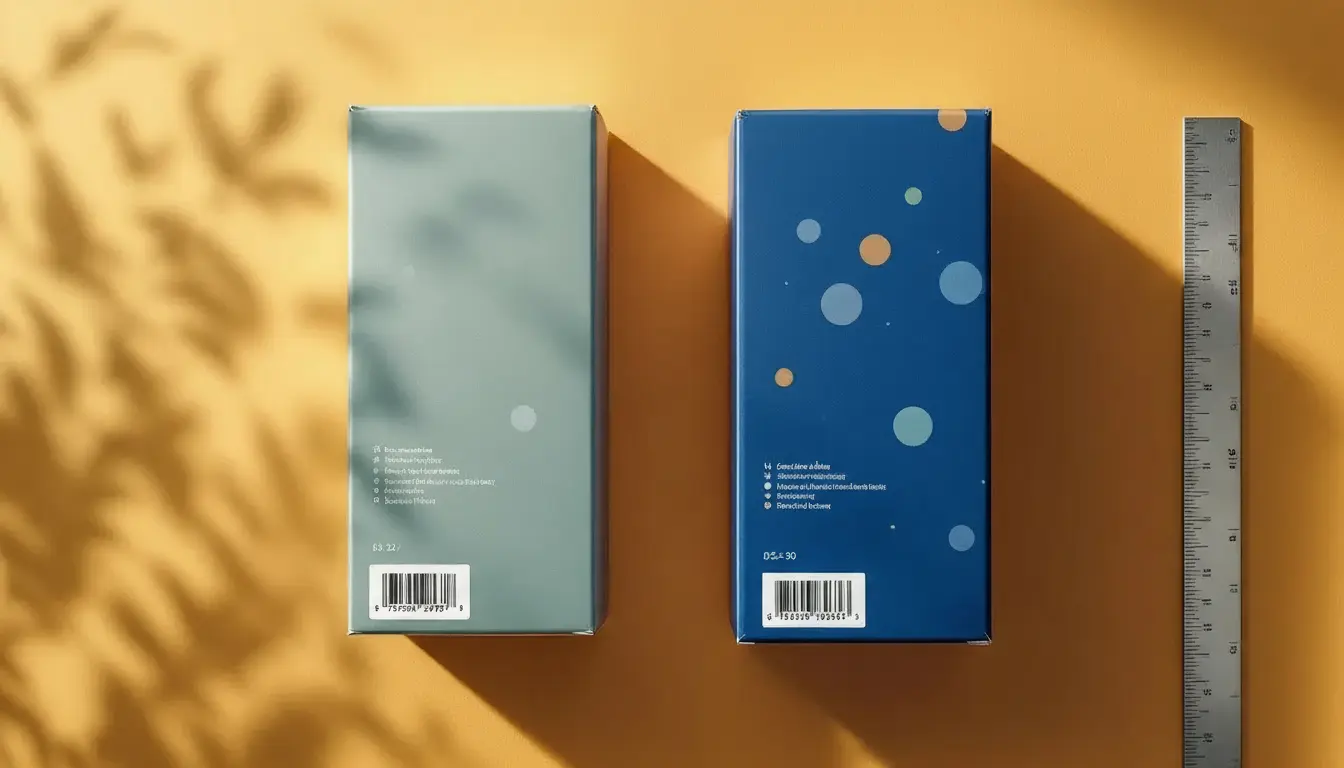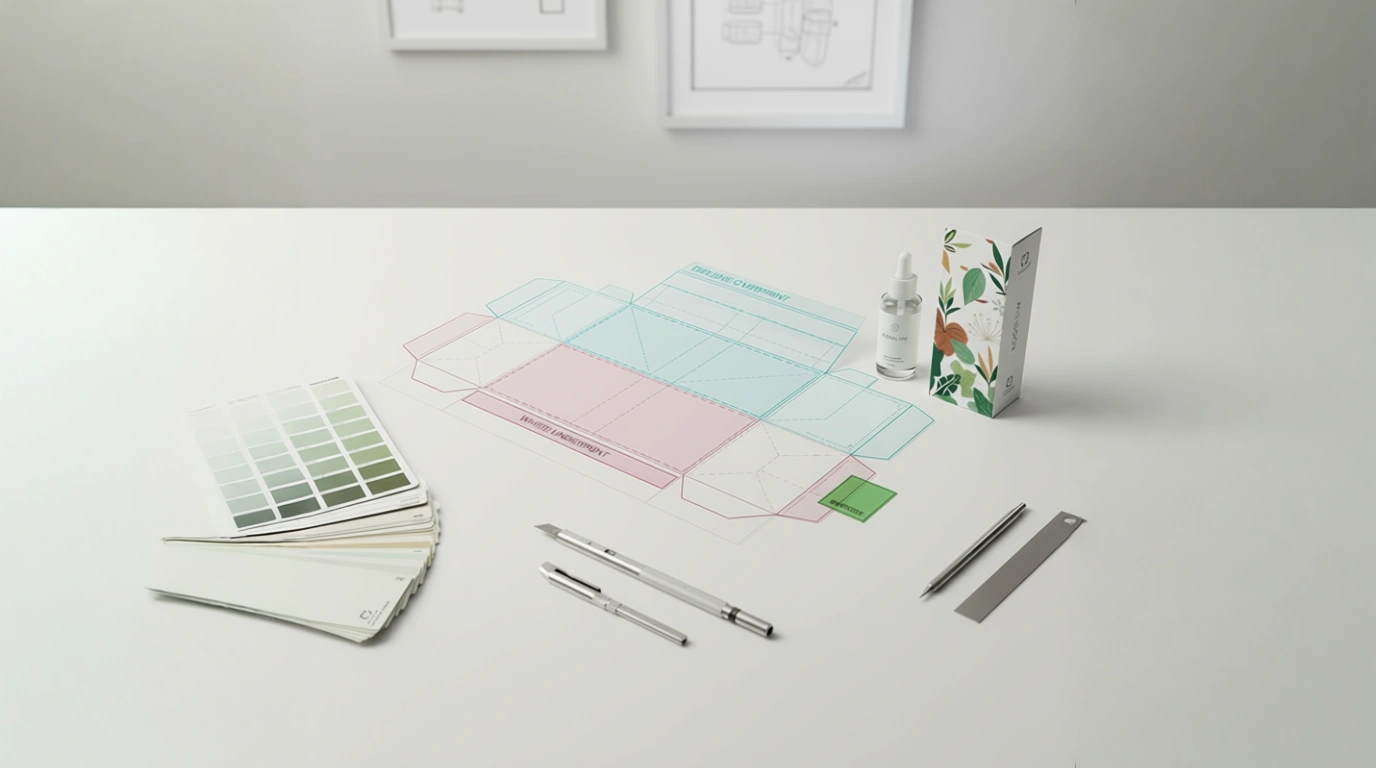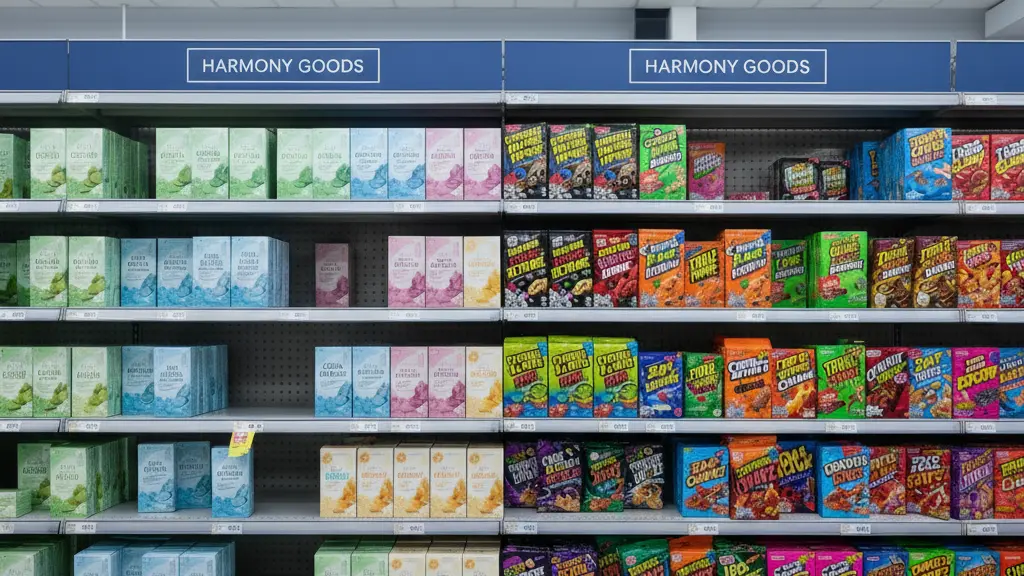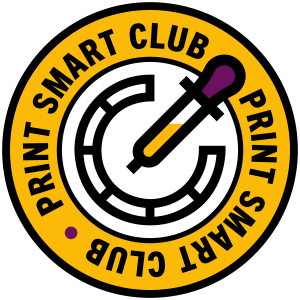8:42 a.m. A familiar ping: “We need to change the ingredients line and add a promo badge. Can we just sticker it?” You’re mid-launch, the warehouse is full, and the seconds feel louder than usual. You want to avoid waste – and you don’t want a fix that looks patched.
So here’s the play: use an over-label for small, safe changes; choose a reprint when structure or compliance shifts. Quick decision. Production-savvy. No drama.
Where Over-Labels Win (and Where They Don’t)
They win when the base is right: dieline fits, color is on target, and the update is small (copy, claim, barcode nudge, promo). They fail when asked to hide bigger problems – wrong size, poor contrast, missing legal, or a full design change. That’s how “cheap” becomes two projects: alignment fuss, scan issues, and a visible patch that chips away at trust.
Also, cost isn’t just material. It’s line time, extra QC, and the risk of a pack that won’t scan. A clear decision protects budget and reputation.
A Simple Two-Bucket Rule
Safe to over-label when:
- The change is localized (a claim, price badge, small translation).
- The surface is smooth: laminated carton, varnished label, glass/plastic. If it’s textured, we test adhesion first. For substrates/finishes, see Materials & finishes that do the selling for you.
- Contrast and codes stay reliable. If the barcode moves, keep quiet zones and finishes consistent; details in Barcodes, legal & nutrition compliance – without killing your design.
- Color remains predictable. If you’re covering metallic or clear areas, add a white underprint so the sticker color matches the panel – White Ink on Clear & Metallic: Build It Right, Proof It Once.
Reprint – don’t patch – when:
- Size, dieline, or panel split changes. Fresh layout is cleaner and often cheaper. Dielines & bleed: the simple guide to packaging that prints right the first time.
- Brand color is drifting pack-to-pack. A near-match sticker is worse than a controlled press run. CMYK vs RGB: why your colors look different in print.
- Regulatory copy changes broadly (INCI order, nutrition table, warnings).
- You’re updating the system, not a single SKU. Fix the master and roll it out – Designing a packaging family: a simple SKU architecture.
If You Sticker, Make It Invisible
- Finish match: glossy on glossy; matte on matte.
- Edge control: micro-radius corners resist lift.
- Coverage: extend 1–2 mm beyond the old element so nothing peeks.
- Color proofing: quick drawdown on the actual substrate.
- File setup: a tidy 3-page PDF – Page 1 art+dielines with overprint spot strokes; Page 2 art-only; Page 3 diecut-only for the kiss-cut. Need a refresher? Dielines & bleed. For repeatable results across variants, templates help – see Reprint-ready templates: cut prepress time by 30%.
Operational Sanity (The Boring Bits That Save You)
- Pick & pack: rolls clearly marked by SKU with a placement diagram.
- QC on the line: first-off approval; barcode scans from three angles under store lighting.
- Record it: drop the spec in your online brand book (WordPress/Elementor on your server) so no one improvises next time – Why your brand needs an online brand book.
Ethical note: This is production guidance, not legal advice. Confirm local regulations and retailer requirements before release.
Short-Term Wins (This Week)
- Salvage good stock instead of pulping it.
- Hit promo windows without waiting for full reprints.
- Keep finance calm with a predictable, targeted spend.
- Trust a substrate-correct prototype – not a guessy PDF.
Long-Term Wins (This Quarter/Year)
- A simple playbook your team can reuse – less debate, faster approvals.
- Cleaner SKU management: stickers for tweaks; reprints for system updates.
- Fewer “obvious sticker” moments on shelf.
- Stronger foundations for the next refresh – then modernize the whole system. Why a packaging system is better than one-off designs.
How I Handle It (Hungary + In-House)
We start with a quick 10-minute triage: change scope, stock on hand, timeline, substrate. I recommend over-label or reprint, explain cost–risk trade-offs, and – if a sticker is right – produce an in-house prototype on the actual material so you can check adhesion, color, and barcode scans the same day. Files ship as a clean 3-page PDF, and the spec goes into your online brand book (HU/EN) so ops can repeat it without me. Want the smooth cadence? Central Europe, real-time: why a Hungary-based designer makes life easier.
Final Thought
Over-labels are a scalpel, not a hammer. Use them for precise fixes. Reprint when the system needs love. Save the budget – protect the brand.
Need a quick call?
Book a Template Setup & Preflight
I’ll convert one SKU into a reusable master and ship your 3-page PDF hand-off this week.



